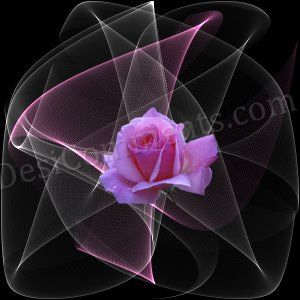If you can use a word processor like Microsoft Word you already possess most of the knowledge and skills you need to create a PowerPoint presentation. PowerPoint presentations are like slide shows with the ability to do some animation, play sound files, and even movie files. Besides its most common use, that is to hopefully maintain the attention of bored people at meetings, PowerPoint can be used to portray anything that lends itself to sequential presentation like telling stories, conducting show and tell, stepping through a task, role playing, etc…
Build a Slide Show from template
Open PowerPoint either from the Start Menu or from a shortcut if it is available. The PowerPoint window will open and smaller window will also appear with the following options:
- Create a new presentation using a Wizard - this is the easiest way to make a presentation but I am not going to cover it.
- Create a new presentation using a Template - which is the choice we will start with.
- Create a blank presentation - which we will look at later.
- Open an existing presentation.
Choose the template option. A new window will open offering a sample of prepared slides with some decorations and font choices ready to use. Use your arrow keys to scroll through the templates and choose one you like.
Choosing a Layout
Next, a window opens asking what kind of layout you want. As you can see there are many layouts to choose from including ones with pictures, charts, tables and more. We will choose the very first layout called "Title Page". Don't feel inhibited by the lack of a layout that suits your sense of design. You can pick one that is close and modify it, add to it, or subtract from it. Or, you can start from scratch.
Add Text
You are now in what I will call the editor. This screen lets you create and modify your slide show. With the title slide you just created, follow the prompts built right into the slide. Add a title and/or a subtitle as you see fit. You can alter the text, the font, its size and color. From the menu bar click Format and then click Font.
You can delete the subtitle text box if you want by clicking inside the subtitle text box. Next, carefully click on the border that surrounds the text box. The vertical text insertion cursor should disappear but the border should remain. Press the Delete key and the box should go away.
To add a text box, from the menu bar click Insert, then click Text Box. The mouse cursor turns into crosshairs that you use to create a new text box. Position the crosshairs where you imagine the upper left corner of your text box will start. Use the left mouse button in a drag operation and drag the crosshairs to where you want the lower right corner to be. As you drag you will see the outline of you text box form. Don't worry if it does not seem tall enough. It will grow as you enter text.
Use the justification, indent, list bulleting and other tools just as you would in Word.
Add a New Slide
To add a new Slide, from the menu bar click Insert and then click New Slide. The layout choices will again appear. This time pick the next kind of slide called "Bulleted List". Add some text to the slide including at least two items in the bulleted list part. Let's view our show so far. From the menu bar click Slide Show, then click View Show. Click your mouse to advance the slide show. After the last slide you will wind up back into the editor. Not terribly exciting, but it is a successful start. From the menu bar click File and Save, and give your show a name.
Add Some Special Animation Features
Make sure the slide editor is oriented to the second, bulleted list slide. Use the scroll bar on the right side to get there if you need to. For greater interest, you can add some animation to the bulleted list by clicking in the bulleted list so the list border shows. Then from the menu bar, click Slide Show and move the mouse cursor over Preset Animations. A menu appears. Select one of the items other than Off. View your show again. Try some of the other preset animations.
Import a Picture
Add a new slide. Choose a layout you like that does not have a chart or table, or choose the blank layout. To add a picture to the slide, from the menu bar click Insert, and then move the mouse over Picture, then click from File. A window will open allowing you to navigate to a desired picture file. Find one and insert it. You can resize and reposition the image. Click inside the picture to reveal the "handles". Use the handles to resize the picture. Point into the picture to drag it where you want it. You can also add pictures from the clipboard as well. BoardMaker lets you do this. Instead of copying the BoardMaker art to a board select the Copy button in the BoardMaker search screen. Switch back to PowerPoint and choose Paste from the Edit menu.
Insert a second picture. Now add a preset animation effect to one picture. Right click on the other picture and choose Custom Animation from the menu that appears. Make sure the Setting tab is on top. Select an action setting and a sound effect. Use the preview button to view the results.
View the slide show. Note that the order of the animation effects is in the order that the animations were assigned to the pictures. Later, we will see how to change the order of effects.
Add some "AutoShapes"
AutoShapes are special objects that you can "draw" by using a mouse drag operation. AutoShapes come in a wide variety of predefined shapes like arrows, ovals, rectangles, stars, speech balloons, etc.
To add an AutoShape look at the lower left side of the PowerPoint screen. Some AutoShapes are available on the lower toolbar like lines, arrows, rectangles, ovals, etc. Other AutoShapes are available by clicking on the "AutoShapes" menu on the same toolbar. Select a block arrow and create it on your slide by dragging over the area where you want it to appear.
You can resize and reposition an AutoShape just like text boxes and pictures. To alter the AutoShape appearance right click on the AutoShape, then click Format AutoShape on the menu that opens. You can change the fill color, the border color and thickness from the Colors and Lines tab. Try it.
You can also add text to your AutoShape. Right click the AutoShape and select Add Text from the menu that appears. You can start typing in some text. To alter the text appearance choose Format then Font from the menu bar. Add some text.
Make the AutoShape do something special
Right click the AutoShape again and this time click Custom Animation. The Custom Animation window opens allowing you to add effects and sounds as you did before. Notice the small list on the left side of the window titled "Animation Order". You can alter the order of the animation effects by highlighting one of the listed items, and using the arrows that appear just to the right of the list. Make a change. Click the Preview button to see what it will look like.
Record an audio clip
Rather than using one of the standard PowerPoint sounds you can record your own sounds. To add a sound that you record from the menu bar click Insert, move your mouse cursor over Movies and Sounds, and then click Record Sound. A little tape recorder will appear. First decide what you will record. I suggest recording a sound appropriate for one of the objects already on the current slide. Next, change the name from Recorded Sound to something more appropriate. Click the red button to start recording, and the little black square to stop recording. Click the little triangle to review the recording. Click OK if you are satisfied, otherwise click Cancel and repeat the procedure.
Once you have a satisfactory recording, you can assign it to one of your AutoShapes. Right click the AutoShape, then select Custom Animation. You can now set the sound to the one you recorded which should now be on the list of available sounds. Click Preview to check it out.
Sounds can also be added from files. To do this from the menu bar click Insert, then move your mouse cursor over Movies and Sounds, then click Sound from File.
Each time you add a sound it also adds a little sound icon to the slide. You can hide these little icons by adding an AutoShape and setting its fill and line color to be identical to the background. This will make the shape invisible. Then slide the sound icons inside the invisible shape. If they are still visible, they are on top of the AutoShape. In this case right-click the sound icon, then click Order and select Send to Back. This will put the icon behind the AutoShape. You can hide these sound icons behind any object using this method.
Set the slide show for automatic advance.
Slide shows can be set to advance automatically in a timed sequence. To do this from the menu bar, click Slide Show, and then click Slide Transition. A box will open. In the area of the Transition box labeled "Advance" check the Automatically after box and define an interval in seconds. You can also choose a transition effect from the list if you want. Click Apply to All, and then view your show.
Views
PowerPoint allows you to view your work in the editor in various ways. From the menu bar, click View. The default view is the Slide or Normal view. Another view that may be useful is the Slide Sorter, which allows you to rearrange your slides. The Outline view shows the text from each slide.










0 comments:
Post a Comment